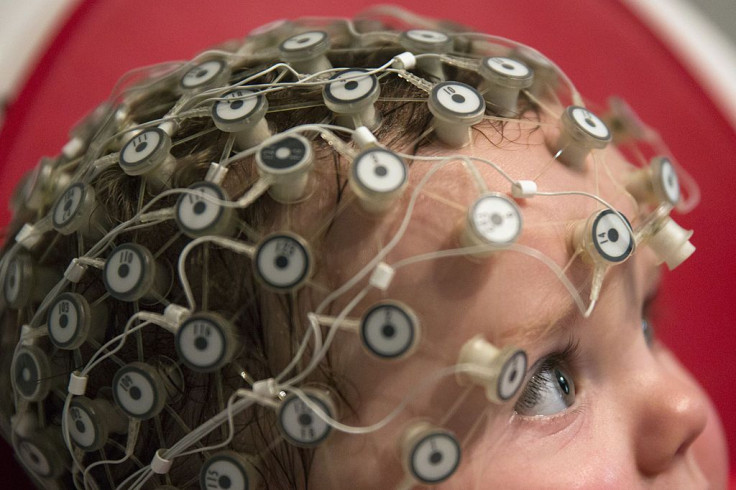US Military: DARPA Grants $65 Million To Connect Human Brains With Digital Devices

A U.S. Military DARPA program is putting $65 million into the creation of an implantable device that will provide data-transfer between human brains and the digital world.
The Defense Advanced Research Projects Agency (DARPA), the emerging technology organization under the U.S. Department of Defense, announced Monday that five research institutions and one private corporation will be recipients of the brain-to-computer research grants. The program seeks to heighten hearing, sight and other sensory perception as well as creating a digital brain implant to relay neuron transmissions directly to digital devices.
The recipients of the $65 million Materials for Transduction (MATRIX) program grants are: Brown University; Columbia University; University of California, Berkeley; Fondation Voir et Entendre (The Seeing and Hearing Foundation); John B. Pierce Laboratory and San Jose, California-based Paradromics, Inc.
Read: Human Brains Could Be Connected To Computers If Elon Musk Gets His Way
CEO Matt Angle’s Paradromics Inc. is the mind-to-machine “Broadband for the brain” research company set to rake in as much as $18 million from the contract. He tells MIT Technology Review that the funding comes with a “moonshot” list of requirements, including the implant’s size being smaller than a nickel and the mandatory ability to send signal back into the brain.
“We are trying to find the sweet spot—and I think we have found it—between being at that cutting edge and getting as much information out at one time, but at the same time not being so far out that you can’t implement it,” Angle told MIT Technology Review.
.@BrownUniversity, @Columbia, FVE, John B. Pierce Lab, @paradromics, @UCBerkeley pursue next-gen #neural interfaces! https://t.co/y3WGuKWbDD pic.twitter.com/SFCBQqE0Bz
— DARPA (@DARPA) July 10, 2017
The DARPA program aims to develop a blueprint for creating an implantable neural interface that will “bridge the bio-electrical divide” between the brain and digital devices. This federal contract to create a “brain modem” includes flexible and brush-like bundles of circuits, sand grain-sized wireless sensors and holographic microscopes capable of observing thousands of brain neurons at one time.
“By increasing the capacity of advanced neural interfaces to engage more than one million neurons in parallel, NESD aims to enable rich two-way communication with the brain at a scale that will help deepen our understanding of that organ’s underlying biology, complexity, and function,” said Phillip Alveda, the founding NESD Program Manager, in a statement Monday.
Research To Improve Sight, Hearing and Speech
The researchers say they hope high-bandwidth connections with neurons in the brain may help treat sensory deficits including blindness, paralysis and speech disorders.
The Neural Engineering System Design (NESD) program announced in 2016 its aim to “provide unprecedented signal resolution and data-transfer bandwidth between the human brain and the digital world,” reads the initial January 2016 statement. “The interface would serve as a translator, converting between the electrochemical language used by neurons in the brain and the ones and zeros that constitute the language of information technology.”
The first year of the program will focus on hardware, software and neuroscience breakthroughs to be tested on animal and cultured cells, DARPA said in a statement. Later phases will seek pathways to getting regulatory approval for human safety testing of the new, implantable devices. DARPA said it “will cooperate with the U.S. Food and Drug Administration (FDA) to explore long-term privacy and information security issues that could obviously be drastically exposed by such invasive data.
DARPA’s research team acknowledged that creating an interface and communicating with the signals of one million neurons “sounds lofty,” but Alveda says their research will only map out a foundation for more complex research in the future.
“A million neurons represents a miniscule percentage of the 86 billion neurons in the human brain. Its deeper complexities are going to remain a mystery for some time to come,” said Alveda. But if we’re successful in delivering rich sensory signals directly to the brain, NESD will lay a broad foundation for new neurological therapies.”
This program was first announced back in January 2016, but the concept has received some high-profile support since its inception. In April of this year, Elon Musk announced he was backing Neuralink, a $100 million company researching a brain-to-computer interface . The same month, Facebook said they had started work on a thought-to-text device for people to silently compose posts and emails.
© Copyright IBTimes 2025. All rights reserved.



















